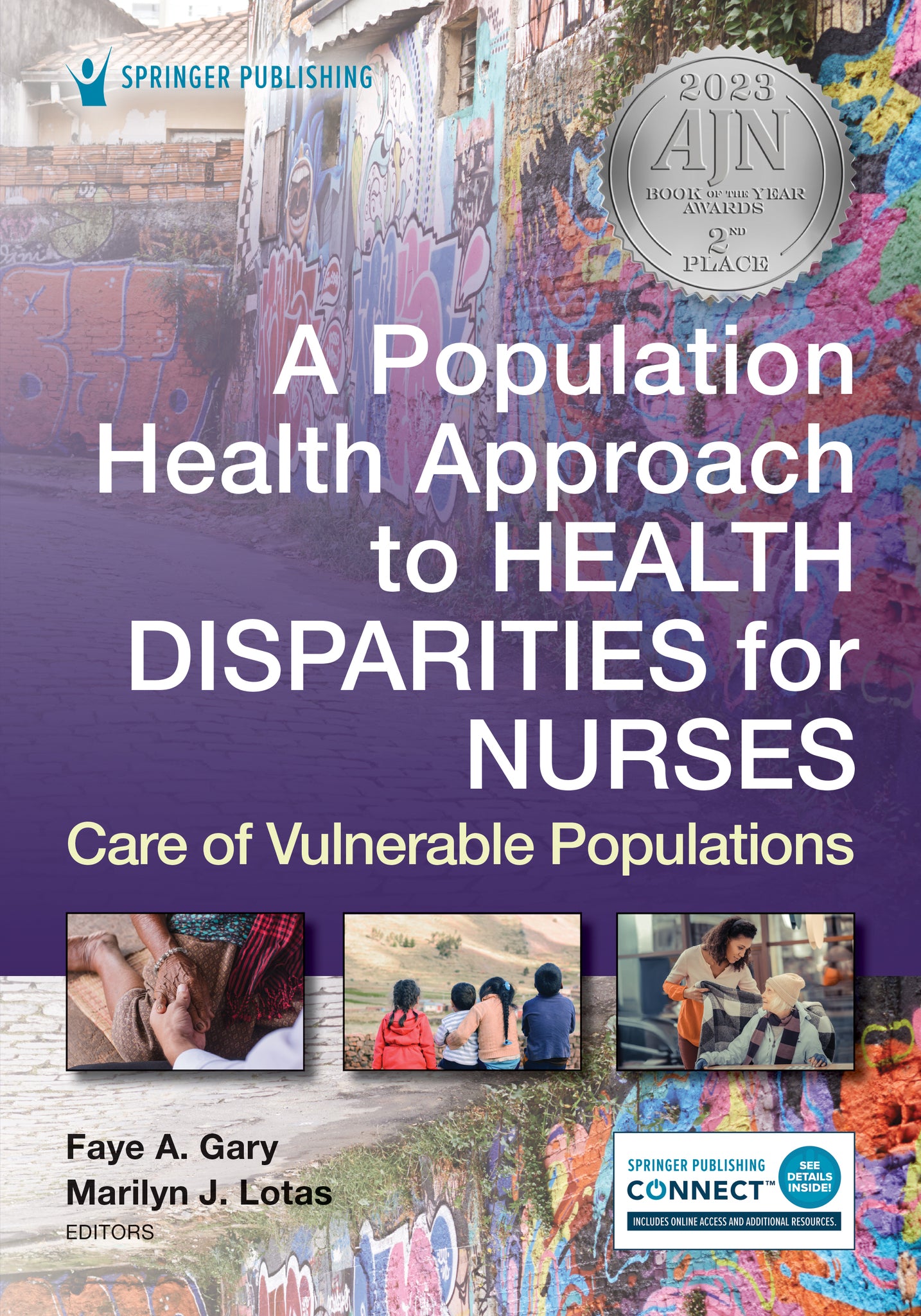We're sorry. An error has occurred
Please cancel or retry.
A Population Health Approach to Health Disparities for Nurses

Some error occured while loading the Quick View. Please close the Quick View and try reloading the page.
Couldn't load pickup availability
- Format:
-
04 November 2022

Awarded second place in the 2023 AJN Book of the Year Awards in Public and Population Health.
Offers vivid narratives illuminating the challenges and opportunities health professionals and policymakers face
Distinguished by abundant patient and health provider narratives highlighting the impact of health disparities on health outcomes worldwide, this scholarly yet practical text prepares RN-BSN, DNP, and PhD students to work toward improving community health for a variety of underserved and vulnerable populations. Grounded in the population health approach addressed in AACN Essentials, the text delivers practical steps nurses can take to address population health goals, including the improvement of quality of care, access to healthcare, improved outcomes, and cost management. The resource is also unique in its reflection of the interconnected points of view of the patient, the provider, and the health system.
Written by lawyers, physicians, social workers, statisticians and economists, psychologists, ethicists, finance experts, population health specialists, anthropologists, and nurses, the text emphasizes an interdisciplinary approach to learning and all components of health care—delivery of care, policy, research, and teaching. It examines demographic differences, chronic and acute health conditions, and the health needs of the unserved/underserved across the life cycle. The book emphasizes the importance of understanding the social determinants of health and discusses ways to address health disparities through changes in public policy, attitudes, beliefs, education, research, and advocacy. Objectives, key terms, discussion questions, and exercises facilitate group discussion about best practices.
Key Features:
- Delivers practical knowledge with detailed narratives and case studies of specific populations from experienced interprofessional authors
- Highlights the interwoven perspectives of patients, health providers, and health systems to promote cultural competence
- Pinpoints health disparities including a discussion of COVID-19
- Presents selected historical landmarks and cases that influence population health outcomes among vulnerable groups
- Interdisciplinary approach includes the perspectives of other health and social science disciplines


Chapter 1. Social Context for Health Care
Chapter 2. Definition and History of Population Health
Chapter 3. Health Policy and Finance across Health Systems
Chapter 4. Major Public Health Issues
Chapter 5. Epidemiology and Health Disparities
Chapter 6. Social Determinants of Health
Chapter 7. Health Literacy: Insights for Action
Chapter 8. Access to Health Care
Chapter 9. Social-Ecological Approach to the Prevention and Mitigation of Child Maltreatment During a Time of Social Disruption
Chapter 10. Mental Health as the Basis of All Health
Chapter 11. Endemic Stress and Racism
Chapter 12. Navigating the Ethical and Legal Challenges of Health Disparities
Chapter 13. Race, Ethnicity, and Population Health
Chapter 14. Marginalized Populations: Examining Vulnerability and Health Inequities Through the Framework of Caste
Chapter 15. Self care, Health Literacy and Management of the Diabetic Patient
Chapter 16. Intersection among Sociocultural Environmental Issues in Adulthood and Childhood Cardiovascular Disease and Hypertension
Chapter 17. Population Health in Rural and Urban Communities
Chapter 18. Historical Trauma and Indigenous Health
Chapter 19. Environmental Health: Neighborhoods and Communities
Chapter 20. Adverse Childhood Experiences: What is an Ounce of Prevention Worth?
Chapter 21. Disturbing Maternal and Child Health Outcomes among Vulnerable Populations
Chapter 22. Lead Poisoning in Children: The Burden of Illness in Marginalized Populations
Chapter 23. Socioeconomic Determinants and Cancer Disparity
Chapter 24. Women and HIV/AIDS in the Kingdom of Eswatini
Chapter 25. Global and Local Poverty and Its Long-Term Impact on Health



